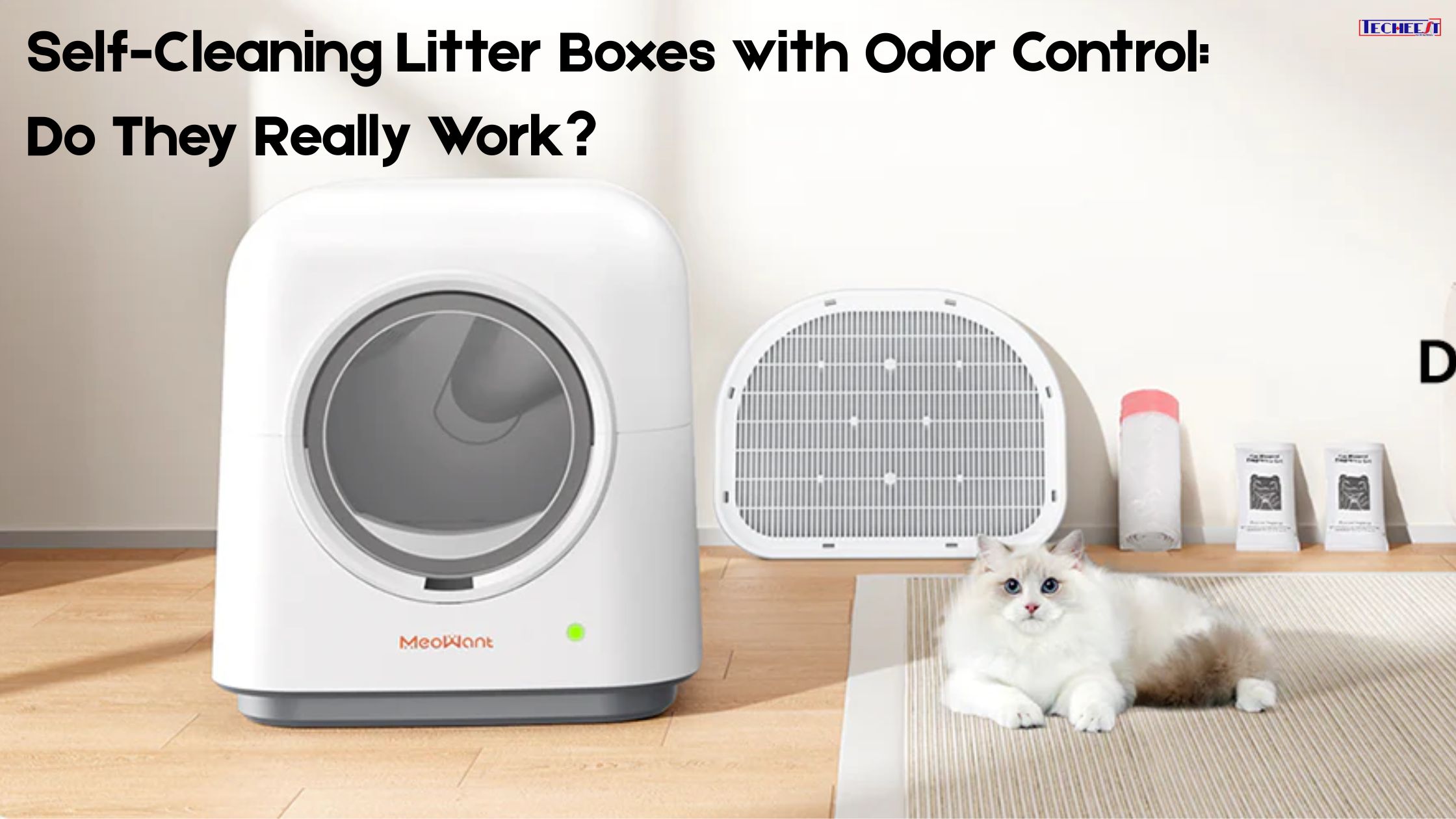Self-cleaning litter boxes have revolutionized cat care, offering a hands-free solution for busy pet owners. These automated systems promise convenience, superior odor control, and minimal maintenance—but do they work as advertised? They claim to keep your home smelling fresh with advanced features like automatic raking, waste containment, and antimicrobial coatings. But are they worth the investment, or just a high-tech gimmick? In this guide, we’ll explore how they function, their effectiveness, and whether they live up to the hype.
What Is a Self-Cleaning Litter Box?
A self-cleaning litter box is an automated system designed to reduce or eliminate the need for manual scooping. Using sensors, timers, or manual triggers, these devices detect when a cat has used the box and then remove waste on their own. Most models deposit clumped waste into a sealed compartment, keeping the litter fresh until disposal.
How Do Self-Cleaning Litter Boxes Work?
There are several types of self-cleaning mechanisms:
- Automatic Raking: A rake sweeps through the litter, pushing clumps into a waste drawer.
- Rotating/Sifting: The box rotates, sifting clean litter from waste.
- Flushing Systems: Connects to plumbing to wash away waste.
- Disposable Tray Models: Use pre-filled trays that get replaced after use.
Common Features
- Odor Control: Carbon filters, antimicrobial coatings, and sealed waste bins.
- Safety Sensors: Stops motion if a cat re-enters.
- Adjustable Timers: Delays cleaning to avoid startling cats.
These boxes promise a cleaner, fresher-smelling home by automating waste removal, but performance varies by model and cat habits.
Odor Control Technology in Self-Cleaning Litter Boxes
Self-cleaning litter boxes combat odors through advanced filtration and containment systems. Here’s how they work:
Key Odor-Control Features
- Carbon Filters – Absorb ammonia and organic odors, trapping smells before they escape.
- Sealed Waste Compartments – Isolate clumps in an airtight drawer or bag, preventing odor leakage.
- Deodorizing Agents – Some models use baking soda-infused litter or built-in scent dispensers.
- UV Sterilization (Premium Models) – UV light kills odor-causing bacteria in the waste tray.
How They Neutralize Odors
These systems work together to trap, contain, and eliminate smells at the source. Carbon filters purify air exiting the box, while sealed compartments prevent waste exposure. Deodorizers mask lingering scents, and UV light (in high-end models) ensures bacteria don’t thrive.
For best results, regular maintenance (emptying waste bins, replacing filters) is essential. While no system is 100% odor-free, modern self-cleaning boxes significantly reduce unpleasant smells compared to traditional litter pans.
Do Self-Cleaning Litter Boxes Really Work?
Self-cleaning litter boxes offer real benefits, but they’re not perfect. Here’s what to expect:
Pros
- Less Scooping – Automatically removes waste, saving time and effort.
- Fresher Air – Odor-control tech keeps your home smelling cleaner.
- Encourages Use – Many cats prefer a consistently clean litter box.
Cons
- High Initial Cost – Pricier than traditional boxes
- Maintenance Needed – Filters, waste bins, and litter still require upkeep.
- Litter & Cat Compatibility – Some models only work with specific litter types, and shy cats may dislike the noise/motion.
They do work—especially for odor control and convenience—but performance depends on the model and your cat’s habits. If you’re willing to invest and maintain it, a self-cleaning box can be a game-changer.
Tips for Getting the Most Out of Your Self-Cleaning Litter Box
To maximize performance and keep your cat happy, follow these best practices:
1. Choose the Right Litter
- Use clumping litter (most models require it)
- Avoid crystals or non-clumping types (can damage mechanisms)
- Select low-dust formulas to protect sensors
2. Maintain a Cleaning Routine
- Empty the waste drawer every 2–3 days (prevents overflow and odors)
- Wipe down surfaces weekly with pet-safe cleaners
- Replace carbon filters monthly (if applicable)
3. Optimal Placement
- Put in a quiet, low-traffic area (cats prefer privacy)
- Ensure stable flooring (vibrations can trigger false cleans)
- Keep near an outlet (for electric models)
4. Proper Cat Introduction
- Let your cat inspect it unpowered first
- Gradually turn on automatic features
- Keep their old box nearby during transition
Final Verdict: Are Self-Cleaning Litter Boxes Worth It?
Self-cleaning litter boxes deliver on convenience and odor control, making them ideal for busy pet owners or multi-cat households. However, their higher cost and maintenance may not suit everyone.
Worth It If:
- You value time-saving tech
- Odor control is a priority
- Your cat adapts well
Skip If:
- You’re on a tight budget
- Your cat dislikes noise/motion
Final Recommendation: A great investment for those willing to maintain it properly—just choose the right model for your needs.

